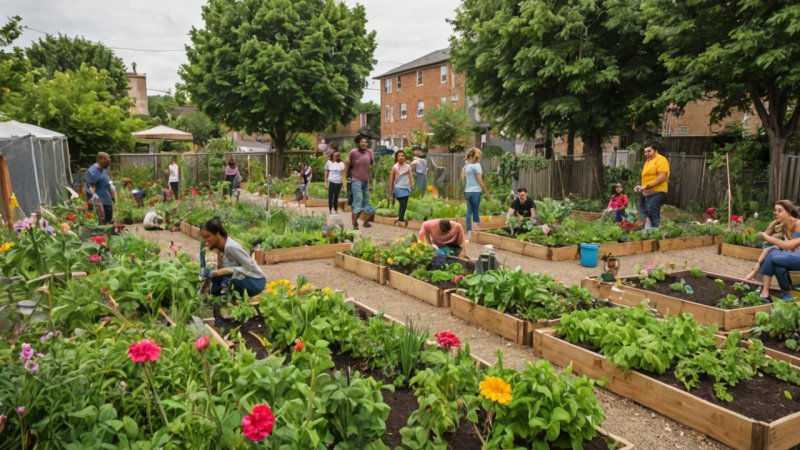Community gardens have become a vital part of urban landscapes, providing not just greenery but also a multitude of benefits for residents. As cities grow and urban spaces become more congested, these gardens offer a sanctuary for both people and wildlife. This article explores the significance of community gardens in urban areas, highlighting their social, environmental, and economic impacts.
One of the most remarkable aspects of community gardens is their ability to foster social connections among residents. In densely populated urban areas, individuals often feel isolated. Community gardens serve as a gathering place where people from diverse backgrounds come together to cultivate plants, share knowledge, and build relationships. This sense of community can lead to improved mental health and a stronger social fabric. Studies have shown that participation in community gardening can increase feelings of belonging and reduce loneliness.
Additionally, community gardens contribute significantly to environmental sustainability. They promote biodiversity by providing habitats for various species, including pollinators like bees and butterflies. Furthermore, these gardens can help mitigate the urban heat island effect, where cities become significantly warmer than their rural surroundings. By planting trees and shrubs, community gardens can lower temperatures, improve air quality, and reduce stormwater runoff. This is particularly important as cities face increasing challenges related to climate change.
From an economic perspective, community gardens can also have a positive impact on urban areas. They provide residents with access to fresh produce, which can be particularly beneficial in food deserts—areas where access to affordable and nutritious food is limited. By growing their own food, individuals can save money and improve their diets. Moreover, community gardens can enhance property values in their vicinity, making neighborhoods more desirable places to live.
Moreover, community gardens often serve as educational platforms, teaching participants about sustainable agriculture, nutrition, and environmental stewardship. Schools and local organizations frequently partner with community gardens to create programs for children and adults alike. These initiatives not only impart valuable skills but also encourage a sense of responsibility towards the environment.
In conclusion, the significance of community gardens in urban areas cannot be overstated. They play a crucial role in enhancing social cohesion, promoting environmental sustainability, and providing economic benefits. As urban populations continue to rise, the importance of these green spaces will only increase. By supporting community gardens, cities can foster healthier, more connected, and vibrant communities.






